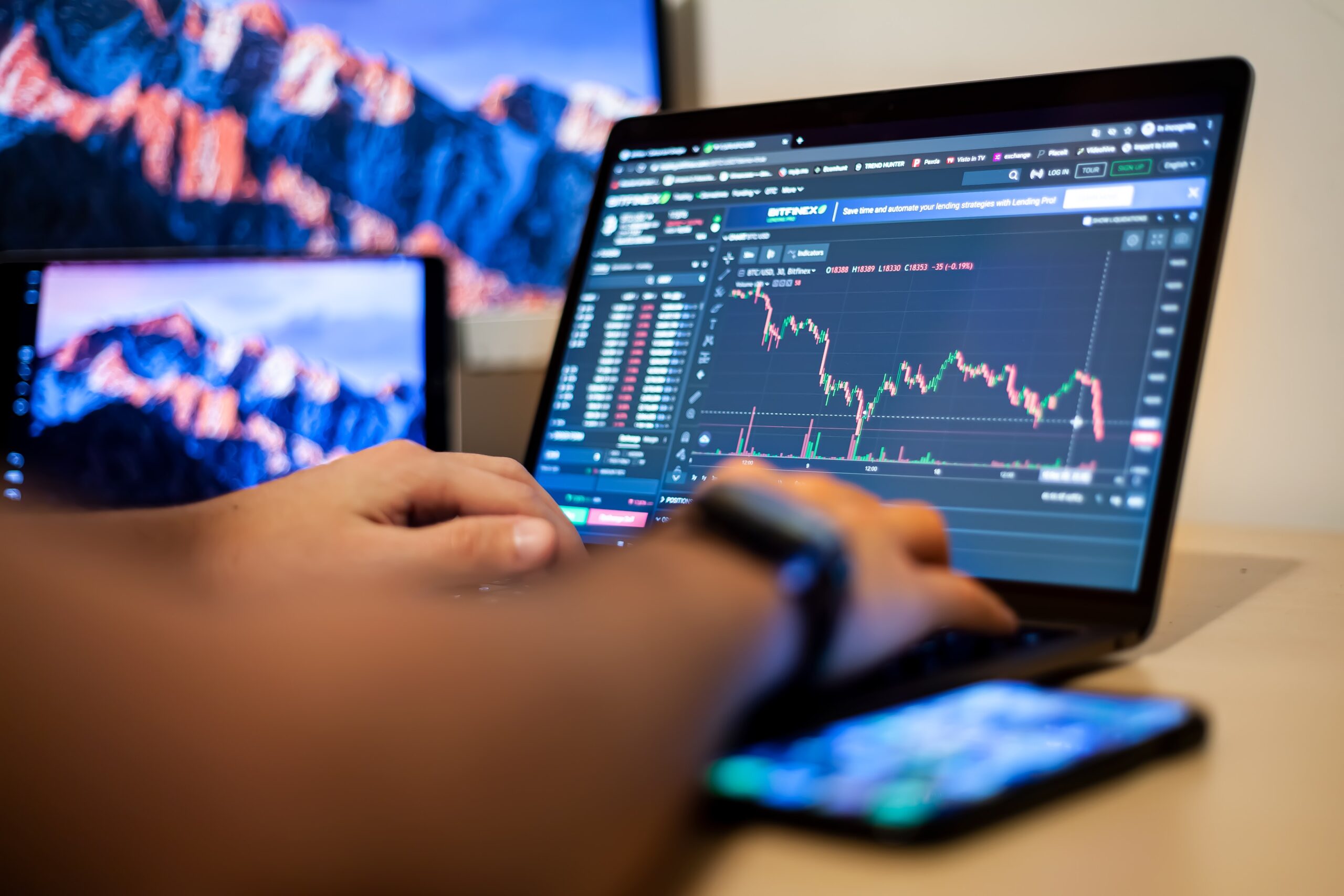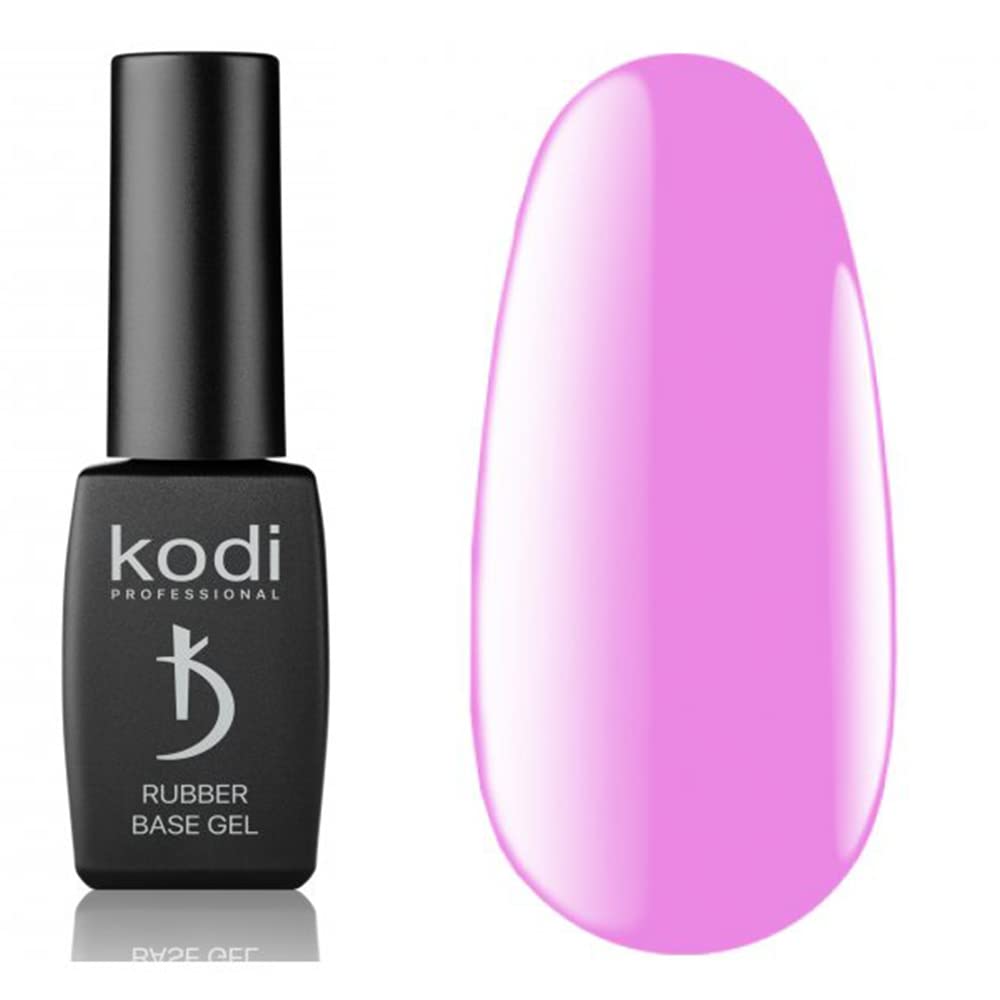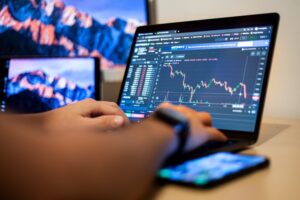How to start forex trading
For those looking to start forex trading, it can be tough for beginners. Luckily, this article will take a look at what forex trading entails, and how one can start forex trading. Keep reading below to learn more about this topic.
What is forex trading?
Forex trading refers to the conversion of one currency into another for a variety of reasons, but usually to potentially make a profit. This takes place in the forex market, which is the world’s most active and liquid financial market. One thing that makes it unique to other markets is that it lacks a central marketplace. Instead, currency trading is done electronically over-the-counter (OTC). This means that all transactions take place on computer networks among traders around the world, instead of on a centralised exchange.
The forex market is open 24 hours a day, five days a week. Currencies are traded around the world in major financial centres across almost every time zone such as Tokyo, Hong Kong, Paris, Singapore, New York, London and more. This makes the forex market highly dynamic, with price quotes changing almost all the time.
Access risk tolerance levels
Before getting into forex trading, the first thing a trader needs to do is assess their risk tolerance level. This means understanding how much money they are willing and can afford to lose when they make a trade. This is because as with all kinds of trading, returns are never guaranteed, no matter how experienced a trader is. Additionally, depending on where a trader is in their trading journey, their risk tolerance levels will differ, which is why it is important traders do not simply copy the trading strategies of others, as they may have different tolerance levels regarding risk.
Educate yourself
Another thing traders need to do before trading is to educate themselves. This can be learning about certain trading strategies and methodologies, understanding how forex trading and the forex market work, how to manage risk, how to use certain trading platforms and more. Fortunately, there are currently plenty of educational resources that traders can take advantage of. These include tutorials, books, blogs, articles, videos, courses, and more. As always, it is better to be prepared upfront, so traders will be less overwhelmed when they start trading with real funds on the line.
Pick a broker
In order to start forex trading, a trader will have to open a trading account. This generally means picking a brokerage firm and registering with them, before opening a live account, as a broker provides traders with the means to access the forex market. It is vital traders remember to do their due diligence when it comes to picking a suitable broker, as brokers can vary in the services they provide to their clients. This includes their fees, commissions, products offered, customer service, minimum initial deposit, and more.
Open a trading account
Once a trader picks a suitable broker, they must follow the brokerage firm’s instructions and requirements before being able to open a live trading account. The requirements vary depending on the brokerage firm, so it is best that traders take a look at their guidelines first. That said, some aspects remain similar between firms, such as requiring clients to provide proof of identity (such as a passport or government-issued identity card), and proof of address (such as a utility bill). Other brokerage firms may also require clients to provide their tax identification number (TIN), and a minimum initial deposit before letting them trade live.
Practice with a demo account
Most brokerage firms offer traders a free demo account so they can practice and hone their trading skills and strategies before trading live on the markets. Demo accounts typically only allow for paper trading, which means everything is done in a simulated environment. This means traders cannot incur a loss, but they also cannot gain any monetary returns either. This is considered a good way for traders to familiarise themselves with the broker’s trading platform interface before trading for real. It is also great for traders to improve or test out new trading strategies without the risk of losing their funds.
Pick a currency pair
Most brokers offer a variety of currency pairs for traders to choose from. These can range from major currency pairs such as GBP/USD, or exotics such as HUF/EUR. With so many on offer, it can be overwhelming for traders to begin. It is highly recommended that traders should carry out some form of fundamental and technical analysis before picking a currency pair to trade. More specifically, they should assess how the base currency and the quote currency are likely to move in relation to each other.
Decide whether to buy or sell
Once a trader has chosen a specific currency pair to trade with, they need to decide whether or not to buy or sell it. This decision should be based on their analysis of the currency pair. For instance, a trader may choose to purchase the pair if they expect the base currency to later rise in value against the quote currency or sell it if they expect the opposite to occur.
Manage risk
There is no doubt that the forex market is extremely volatile, meaning there are plenty of opportunities for traders to take advantage of. However, the flip side is that it can be extremely risky, especially for inexperienced traders. This is why it is essential traders have a plan to manage their risk and guide the exit and entry points of their trades. For instance, this includes setting stops and limits.
There are various stops and limits available. Normal stops focus on closing a position automatically if the market moves in an unfavourable direction. That said, normal stops do not protect traders against slippage. Guaranteed stops are designed to always be closed out at exactly the specified price, even if the market moves quickly. However, traders will need to pay a small premium if the guaranteed stop is used.
Monitor the market
Once a position has been opened, traders should spend their time monitoring their trades. Depending on the trading platform, they can also set price alerts to receive SMS, email, or push notifications when a specified sell or buy point or percentage is reached. Aside from these alerts, traders should keep up-to-date with the latest news and current developments. This is because these events could potentially impact and move the forex market.
Bottom line
Overall, forex trading provides a potentially lucrative opportunity for traders to take advantage of. While it may be complicated at first glance, it is still possible for novice traders to begin their forest trading journey. As always, be sure to do your research before committing to anything. If you are still unsure about how to forex trade, it is best to reach out to a reputable financial advisor, so you know what to expect.
Share this content:













